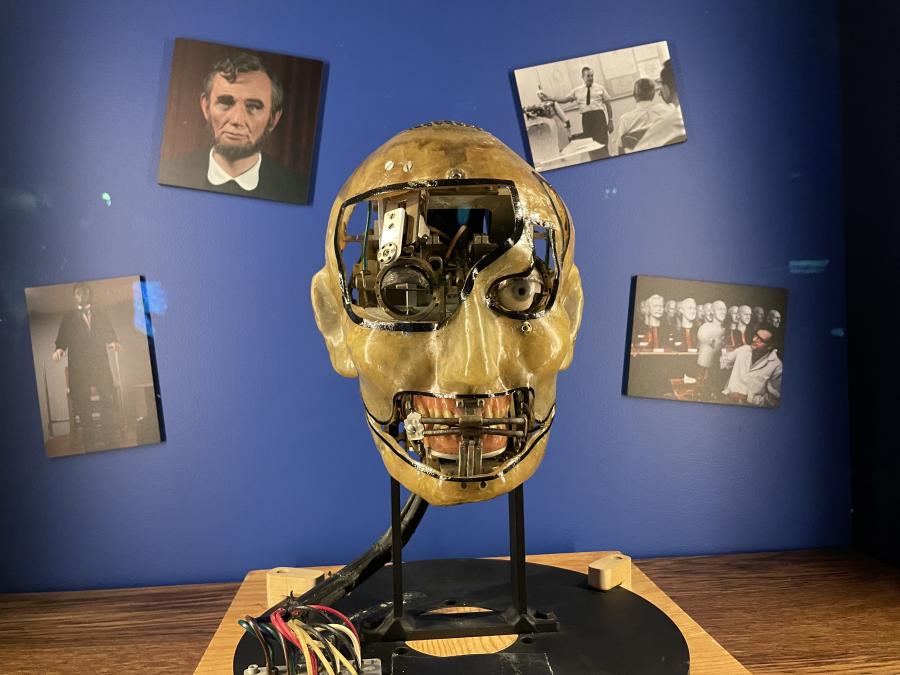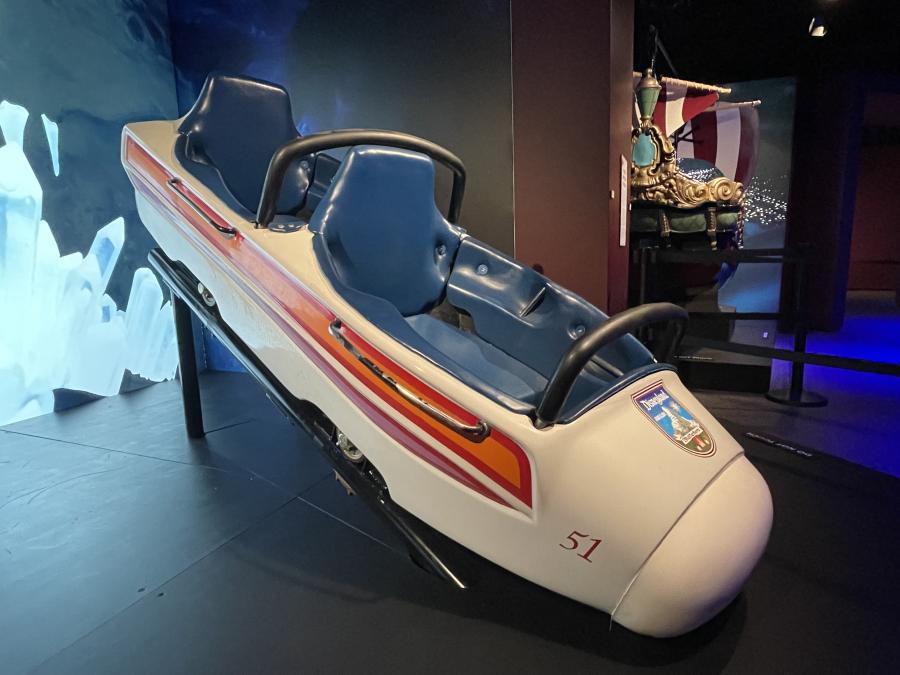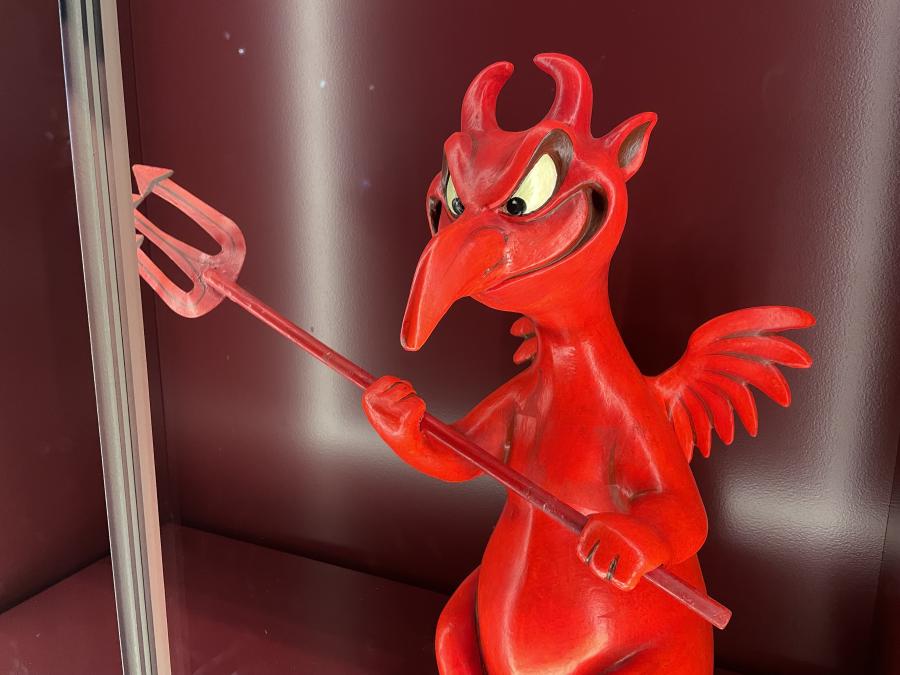On Feb. 8, 2023, Disney100: The Exhibition made its highly anticipated debut in Philadelphia. Hosted at renowned science museum The Franklin Institute, the elaborate exhibit space filled with relics from the Walt Disney Company’s iconic films and beloved theme parks was a joint effort between the Walt Disney Archives, The Franklin Institute, and producer Semmel Exhibitions.
IAAPA News spoke with an individual from each corner of the development process to gather insights on how their respective areas of expertise seamlessly converged to produce a lucrative, well-received touring exhibit.
Matthew Adams, Manager of Exhibitions for The Walt Disney Company
Adams shares that one of the earliest conversations that took place involved how the illustrious 100-year history of the Walt Disney Company should be presented to the public.
“The first question is: Do you tell this story chronologically? And then, ultimately, the decision was made that no, we do not want the whole exhibition to be chronological.”
The logic behind this choice? A desire to craft a narrative within the exhibit that appeals to the varying ages and interests of Disney enthusiasts.
“You have the oldest fans and the youngest fans—and the younger ones may not be as interested in the cartoons from the 1920s and ‘30s as they are in Olaf,” Adams explains. “If it was chronological, there’d be nothing for them until the very end of the exhibition. So, the decision was made to not approach it chronologically or thematically, instead focusing on some of the core philosophies of Walt Disney, so every gallery is kind of themed to something that was important to him.”
Creating a plan that would allow the team to fit as many artifacts as possible into the fixed exhibition space also posed questions and challenges.
“We’re pretty limited in size, right now it’s about 15,000 square feet, and that’s on the maximum end of most of these venues that we’re looking at. So, that definitely puts you in a box a little bit about what you can include—especially in terms of size and how many of everything,” admits Adams. “But, in a way, kind of putting those parameters in place makes you get a little bit more creative.”
Despite the space parameters, Disney was successfully able to incorporate several large pieces into the exhibit. “We have a twelve-foot model of the Nautilus from 20,000 Leagues Under the Sea, we have a Matterhorn Bobsled—and those are massive pieces. So, we still managed to find a way to include those larger, showstopper moments,” assures Adams.
Abby Bysshe, Chief Experience and Strategy Officer at The Franklin Institute
Bysshe details the importance of attracting large traveling exhibitions to The Franklin Institute, as the museum is primarily dependent on earned revenue.
“In order to drive incremental attendance and sales, we do rely on the touring exhibition business quite a bit. And we do go after some of the largest branded exhibitions, because we have a very busy marketplace in Philly with sports and all the cultural institutions,” she explains.
Even when these topics may not seem to align with the educational objectives of a science museum, engaging new exhibits draw in fresh visitors and open guests’ eyes to what the permanent exhibits offer.
“Our touring exhibition does not always 100% coincide with science topics,” Bysshe says. “We do have the benefit of having a whole museum that is attached to the ticket, so if people do spend three and a half hours in the museum, only forty-five minutes to an hour of that is the special exhibition. So, we see it as a real opportunity to drive attendance to the science content of the museum but using the big brand power to do that.”
Bysshe’s business acumen and comfort with entrepreneurial decision-making also came in handy during conversations about the project. “I think we speak the same language as a lot of these producers. It makes the conversation easier because we’re going in with similar goals,” she says of the collaborative, financially oriented discussions.
This intimate understanding of other stakeholders’ needs also gave Bysshe a unique degree of authority regarding how the exhibition was put together within the venue. While the host facility is not traditionally involved so early in the process, her expertise—as well as The Franklin Institute’s status as the exhibition’s debut location—meant the museum team was looped into many conversations with the Walt Disney Archives and Semmel Exhibitions about the project’s development.
“Whenever you’re opening something first, you have to be really great at operationalizing, be able to give feedback, make sure you’re working with the producer to help them improve it, and ensure that the rest of the tour runs seamlessly,” she says.
Anna Lenhof, Project Manager with Semmel Exhibitions
Semmel Exhibitions had the most comprehensive involvement in the exhibit’s production and installment.
“As the producer of Disney100: The Exhibition, Semmel Exhibitions is involved in every single aspect of the production, whether in the creative process by bringing in and supporting the work of designers, curators, and fabricators, or logistically by finding the right places to host the premiere of the exhibit like The Franklin Institute,” explains Lenhof. “Most importantly, we bring the financial funding and make sure the exhibition travels all over the world in the upcoming years.”
Of the importance of communication between all involved stakeholders, Lenhof says that early conversations and troubleshooting were crucial in facilitating a smooth delivery. “Like with every other project, it is important to oversee each division, have regular meetings, ask the right questions, identify issues early on, and to make sure that the right teams speak with each other.”
Semmel is also offering production support as Disney100: The Exhibition closes on Aug. 27 and departs Philadelphia, continuing its North America and international tours.




